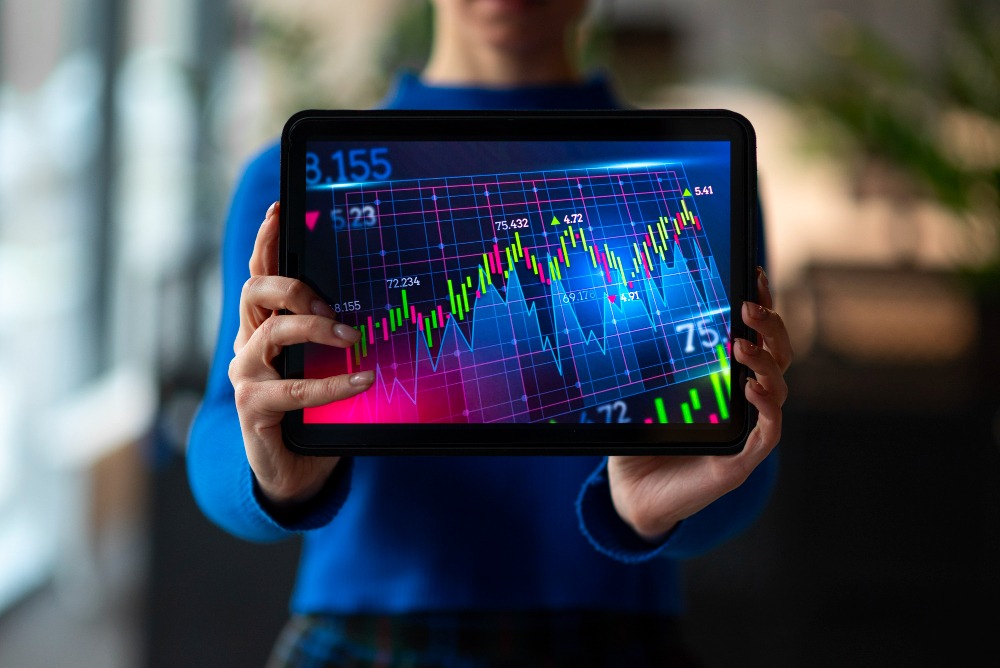The Role of AI in Enhancing Stock Trading Strategies

The current trading market underwent drastic changes with the introduction of Artificial Intelligence: AI-enabled algorithms have enhanced accuracy and reduced the need for human intervention. With the global AI trading market anticipated to reach $50.4 billion by 2023 and the promise of increased efficiency, it’s no wonder that more and more companies and traders are joining the ongoing trend. In this brief explainer, we’ll dive into the key benefits and risks of AI trading and how employing an AI stocks trading bot into your routine can help you achieve an unparalleled win/loss ratio.
What Are AI Investing Applications?
1. Algorithmic Trading
Algorithmic trading is based on sophisticated computer programs that make trades without human intervention. By eliminating the human factor, the software skyrockets the accuracy of data interpretation, uncovers hidden insights, and distinguishes market patterns based on previous history. AI-enhanced trading helps market participants make smarter choices and enhances productivity.
2. Sentiment Analysis
Unexpected events, like geopolitical issues, can uproot the stock market and increase its volatility. Sentiment analysis is tailor-made to combat the market’s unpredictability by assessing current market sentiment via news articles, social media, and other online activity.
3. Portfolio Optimization
Portfolio management is a crucial part of investing; by collecting various assets, market participants diversify their portfolios and better manage potential risks. As AI investing bots advise investors on how to balance their portfolios better, market participants will better mitigate potential risks and grow their income.
4. Risk Management
Another possible AI application involves risk management. AI’s capability to analyze large datasets at fast speeds will be a boon for its forecasting accuracy.
AI-Enhanced Stock Trading: Key Pros
From pattern prediction to improved accuracy, algorithmic trading comes with many perks. Let’s take a closer look at some of them.
- Lower Cost. If you’re a sole trader, it’s hard to compete with traditional investment firms boasting hundreds of trading professionals. Luckily, AI-enhanced trading increases your accuracy and can run non-stop on your computer. With a proliferation of bots and AI trading platforms, joining the ongoing trend and automating your trading is getting easier than ever.
- Market Forecasting. AI-enhanced tools come with a predictive superpower: the ability to predict market changes and formulate trading strategies. It allows for increasing accuracy and profitability.
- Enhanced Risk Management. With automated trade execution, AI can build predictive models based on previous data. These insights allow human traders to make smarter and more logical choices by eliminating emotions.
AI-Enhanced Stock Trading: Key Cons
Despite the plethora of never-ending advantages of AI trading, automation and overreliance on machines come with some drawbacks.
- Potential market manipulation. High-frequency trading—algorithmic trading that conducts transactions at extremely high speeds and turnover rates—can lead to market volatility. Conducting thousands of calculations without always understanding how exactly the software makes the decision gives rise to discussions on how to regulate AI.
- Overreliance on historical data. One of AI trading’s key pros comes with a significant drawback: as deep learning algorithms and neural networks over-rely on historical price data, they can fail to make an informed decision in a different set of circumstances. For instance, crises and geopolitical conflicts are market stressors that can increase volatility and go under the radar of AI algorithms, leading to subsequent financial losses.
- Potential software errors. With automated trading, even one bug in the software can lead to massive fallout. With hundreds of trades conducted, such a small error can have drastic ramifications.
To wrap it up, as more and more companies and traders incorporate AI algorithms into their routines, the trading landscape continues to undergo drastic changes. Although automation can come with inadvertent drawbacks, like overreliance on historical data and buggy software, its numerous advantages, like predictive power, increased accuracy, and lower costs, make the adoption of the tech a worthwhile endeavor.





